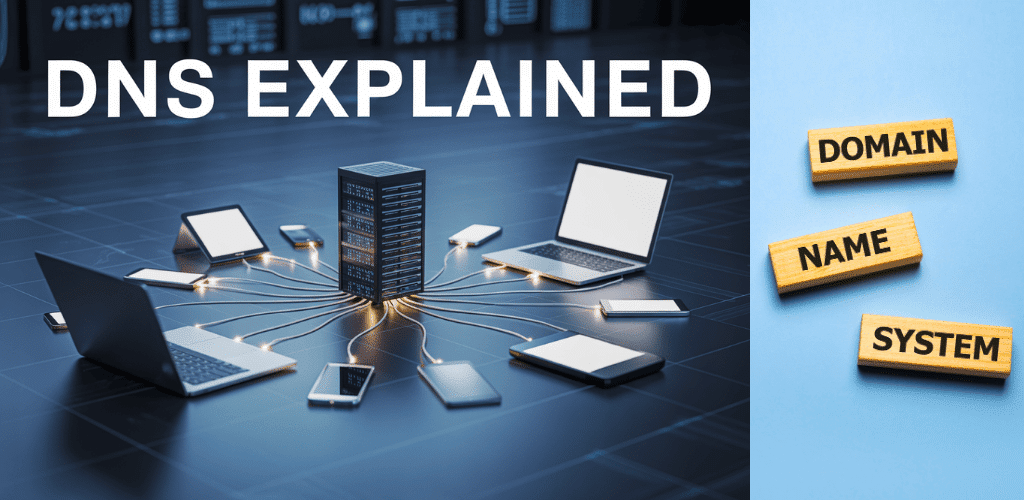Table of Contents
Is Your WooCommerce Store Suddenly Crashing? You’re Not Alone
Has your WordPress site mysteriously crashed without warning? Thousands of WooCommerce store owners recently found themselves staring at error messages containing “strpos(): Argument #1 ($haystack) must be of type string, null given” in the BlockPatterns.php file. What makes this particularly alarming is that it happened without any changes being made to their websites – leaving business owners scrambling for solutions while their online stores remained inaccessible to customers.
In this article, we’ll dive into the details of this widespread WooCommerce bug, explain why it’s affecting WordPress sites across the globe, and provide you with both immediate temporary fixes and long-term solutions. Whether you’re currently experiencing this issue or want to protect your site from potential problems, you’ll discover exactly what steps to take – from implementing code fixes to properly clearing cache layers – to get your store back online and prevent future disruptions.
Understanding the WooCommerce Bug
A. Error details: “Uncaught Error: strpos()” in BlockPatterns.php
The WooCommerce bug that’s causing widespread issues manifests as a fatal error with the message: “Uncaught Error: strpos(): Argument #1 ($haystack) must be of type string, null given.” This error specifically occurs in the BlockPatterns.php file, located at wp-content/plugins/woocommerce/src/Blocks/BlockPatterns.php, typically at line 251.
The technical issue involves the PHP strpos() function receiving a null value instead of the required string parameter, causing PHP to throw a TypeError that crashes affected sites. This happens because the code is attempting to check if a certain string contains a substring, but the main string (haystack) is unexpectedly null.
B. Affected sites and symptoms
This WooCommerce security bug is affecting numerous WordPress websites, with reports indicating:
- Sites suddenly crashing without any recent updates or plugin changes
- Complete inability to access either the WordPress admin panel or the store frontend
- The issue persists across multiple versions, including WooCommerce 9.8.3 and 9.7.1
- At least five sites were reported to have gone down recently due to this specific error
- Some users found that neither upgrading nor downgrading WooCommerce resolved the problem
- Sites hosted on platforms like WP Engine face additional complications due to multiple cache layers
C. Root cause analysis
The root cause of this WordPress vulnerability has been identified as incorrect block pattern data being received from a remote WooCommerce pattern repository. Specifically:
- The issue stems from a bad response from the Woo pattern repository that’s being cached
- The BlockPatterns.php file expects category data to be in string format but is receiving null values
- One user reported the error occurred after disabling the Legacy REST API
- The problem appears related to Full Site Editing functionality
- The main technical failure is in the pattern data handling where the code doesn’t properly validate that it has received a string before attempting to process it
WooCommerce developers have deployed a temporary fix that returns empty category arrays instead of null values, but many sites continue to experience problems due to lingering cached data from the previous faulty response.
Now that we understand the technical nature of the WooCommerce bug, let’s examine its broader impact on WordPress websites and the potential security risks it poses.
Impact on WordPress Websites

Now that we understand what the WooCommerce bug involves, it’s crucial to assess how it might be affecting WordPress websites across the internet. Many site owners may be experiencing issues without realizing the cause is related to this specific vulnerability.
Signs Your Site Might Be Affected
If your WordPress site is running WooCommerce, watch for these telltale indicators:
- Fatal error messages specifically referencing “Uncaught Error: strpos(): Argument #1 ($haystack) must be of type string, null given” in the BlockPatterns.php file
- Site crashes that occur unexpectedly without any recent updates or plugin changes
- WooCommerce functionality failures despite running seemingly compatible versions (including 9.8.3 or 9.7.1)
- Persistent errors that remain even after standard troubleshooting steps
These symptoms have been widely reported on WordPress.org support forums, with many users experiencing identical issues regardless of their recent site activity.
Risk Assessment for E-commerce Operations
The implications for your online store’s operations are significant:
- Payment processing disruptions can prevent customers from completing purchases
- Gateway errors might appear during checkout processes
- Website performance issues could lead to slow loading times and customer abandonment
- Plugin and theme conflicts may intensify, causing cascading functionality failures
- Mobile display problems might render your store unusable on certain devices
E-commerce businesses are particularly vulnerable to such technical disruptions, as any downtime directly impacts revenue generation and customer trust.
Potential Data and Sales Losses
The consequences of this bug extend beyond mere inconvenience:
- Lost transactions during periods when the site is experiencing fatal errors
- Inventory management errors potentially leading to overselling or stock discrepancies
- Customer data security risks if the site becomes unstable or compromised
- Reputational damage resulting from poor user experience and service interruptions
- Revenue reduction that compounds with each hour the issue remains unresolved
Statistics show that e-commerce businesses are frequent targets for technical issues, and even temporary disruptions can lead to significant financial and reputational damage.
With these impacts in mind, let’s explore the temporary fix that can help mitigate these risks while waiting for a permanent solution from the WooCommerce team.
Implementing the Temporary Fix

Now that we’ve examined the impact of this WooCommerce bug on WordPress websites, let’s focus on implementing a temporary fix to keep your site running while the broader solution is being deployed.
A. Locating and editing the BlockPatterns.php file
If you’re unable to update to WooCommerce version 9.8.4 (which contains the permanent fix) or clear the problematic cache through database methods, you can directly modify the source code:
- Navigate to your WordPress installation directory
- Locate the WooCommerce plugin folder
- Find the BlockPatterns.php file within the plugin structure
- Make a backup of this file before making any changes
- Open the file in a code editor that supports PHP syntax
This file contains the code that’s causing the fatal error when it encounters null values from the Woo pattern repository.
B. Adding the null coalescing operator to line 251
The core issue involves the handling of categories in the BlockPatterns.php file. To implement the fix:
- Find line 251 in the BlockPatterns.php file
- Look for code related to category parsing, specifically where the error “Uncaught Error: strpos(): Argument #1 ($haystack) must be of type string, null given” is occurring
- Add a null coalescing operator to ensure that even if a null value is returned, the code won’t throw a fatal error
- The modification effectively ensures that the function will receive a string value rather than null
This temporary fix prevents the “strpos()” function from receiving a null value, which is what causes the site-breaking error.
C. Testing your site after implementation
After implementing the fix, it’s crucial to verify that your site is functioning properly:
- Save the modified file
- Clear your browser cache
- Visit your website’s frontend to confirm it loads correctly
- Access the WordPress admin panel to ensure administrative functions work
- Check specifically for any WooCommerce-related functionality, such as product pages and checkout
If you continue to experience issues after implementing this temporary fix, you may need to address lingering cache issues, which we’ll cover in the next section on Clearing Cache Layers.
Clearing Cache Layers
Now that we’ve implemented the temporary fix for the WooCommerce bug, it’s crucial to clear all cache layers to ensure the changes take effect across your WordPress site. Cached data might retain vulnerable code, potentially leaving your site at risk despite applying the fix.
WordPress cache clearing procedures
When dealing with the WooCommerce security bug, thorough cache clearing is essential for your protection:
- Clear WordPress internal cache – Navigate to your WordPress admin panel and clear any built-in caching mechanisms
- Plugin cache clearing – If you’re using caching plugins, access their settings to purge all cached data
- Database cache – The WooCommerce sessions table can become bloated, affecting performance and potentially storing vulnerable data
- As discovered in one case, the wp_woocommerce_sessions table contained approximately 75,000 rows with 69,000 expired entries consuming 4.2 GB
- WooCommerce should automatically clear this table, but this process may fail
- As discovered in one case, the wp_woocommerce_sessions table contained approximately 75,000 rows with 69,000 expired entries consuming 4.2 GB
Special considerations for WP Engine users
WP Engine hosting implements specialized caching systems that require additional attention:
- Access your WP Engine user portal
- Locate the cache clearing options specific to your WP Engine environment
- Perform a complete cache purge for your affected WordPress installation
Addressing Varnish and Page Cache issues
Advanced caching systems need special handling to ensure the WooCommerce bug fix is fully implemented:
- Varnish cache clearing – If your hosting uses Varnish:
- Access your hosting control panel to purge the Varnish cache
- Contact your hosting provider if direct access isn’t available
- Access your hosting control panel to purge the Varnish cache
- Validating cache clearing – After purging all cache layers:
- Use Action Scheduler plugin to check if session cleanup actions are properly scheduled
- Look for any stuck or pending actions related to session management
- Manually trigger these actions if necessary to ensure proper execution
- Use Action Scheduler plugin to check if session cleanup actions are properly scheduled
With all cache layers properly cleared, your temporary fix for the WooCommerce bug should now be fully effective. In the next section, we’ll explore long-term solutions and prevention strategies to ensure your WordPress site remains secure against similar vulnerabilities in the future.
Long-term Solutions and Prevention

Now that we’ve covered the essential steps for clearing cache layers, let’s focus on establishing long-term solutions to protect your WordPress site from WooCommerce vulnerabilities going forward.
A. Official WooCommerce patch updates
The WooCommerce team actively maintains and updates their plugin to address security vulnerabilities. Recent developments show:
- The latest WooCommerce release (9.8.4) from May 6, 2025, includes critical security patches
- Regular incremental updates demonstrate the team’s commitment to maintaining secure code
- Each new version typically includes bug fixes and security improvements
- Official patches are verified with GPG keys, ensuring authenticity
To ensure your site remains protected, make it a priority to install official WooCommerce updates as soon as they become available, especially those labeled as security patches.
B. Monitoring the GitHub issue thread
Staying informed about emerging security concerns is crucial for maintaining your WordPress site’s integrity:
- The WooCommerce GitHub repository provides real-time updates on identified vulnerabilities
- Community engagement through reactions and comments often highlights critical issues
- Each commit includes detailed release notes explaining what security issues were addressed
- Following the GitHub issue thread gives you advance notice of potential vulnerabilities
By actively monitoring these discussions, you can implement temporary fixes even before official patches are released, minimizing your exposure to WordPress security risks.
C. Best practices for plugin updates going forward
To prevent future WooCommerce security vulnerabilities from affecting your site:
- Implement a regular update schedule that prioritizes security-related patches
- Review version history notes before updating to understand what vulnerabilities were addressed
- Consider setting up a staging environment to test WooCommerce updates before applying them to your live site
- Keep track of the chronological version history to ensure you haven’t missed any critical updates
- Pay special attention to major version releases (like 9.8, 9.3, etc.) as they often include significant security improvements
By following these best practices, you’ll significantly reduce the risk of security vulnerabilities compromising your WordPress site through the WooCommerce plugin.
The WooCommerce bug causing WordPress sites to crash has affected numerous users, presenting with a specific error in the BlockPatterns.php file. While a temporary fix involving code modification has been suggested, it’s crucial to clear all caching layers after implementing this fix, especially for users on platforms with multiple cache types like WP Engine.
As we wait for WooCommerce to release a permanent solution, staying vigilant about your WordPress site’s security remains essential. Keep an eye on the official GitHub thread for updates, implement the temporary fix if needed, and ensure proper cache clearing across all layers. Taking these proactive steps will help safeguard your e-commerce site from unexpected downtime and protect your business operations during this ongoing technical challenge.







